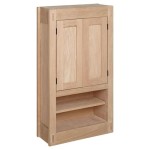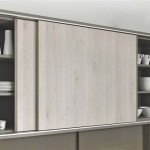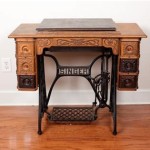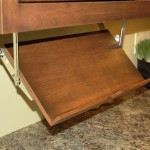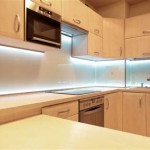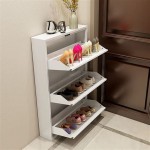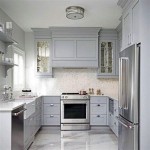Where To Position Handles On Shaker Cabinets
Shaker cabinets are a timeless and versatile choice for kitchens, bathrooms, and other areas of the home. Their clean lines and simple design lend themselves to a variety of styles, from traditional to contemporary. A crucial element in completing the look of Shaker cabinets is the hardware, specifically the placement of handles and knobs. Proper placement is not merely aesthetic; it also contributes to functionality, ease of use, and the overall perceived quality of the cabinetry. Incorrectly positioned hardware can detract from the clean aesthetic of Shaker cabinets and even create ergonomic issues for users.
Determining the optimal placement for handles on Shaker cabinets involves considering several factors, including cabinet size, door style (full overlay vs. inset), desired aesthetic, and user preferences. There is no single "right" answer, as the best position will vary depending on the specific circumstances. Instead, understanding the underlying principles and common guidelines will allow for informed decisions that result in both visually appealing and functionally sound hardware placement.
The following provides a comprehensive guide to positioning handles on Shaker cabinets, focusing on key considerations and best practices to achieve a cohesive and practical design.
Understanding Shaker Cabinet Construction
Shaker cabinets are characterized by their five-piece door construction. A flat center panel is surrounded by a frame consisting of four pieces of wood: two stiles (vertical pieces) and two rails (horizontal pieces). This design provides a clean and understated aesthetic, making Shaker cabinets adaptable to various design styles. The frame itself becomes a crucial element in determining handle placement.
The most common approach to handle placement on Shaker cabinets involves aligning the hardware with the frame's stiles or rails. This leverages the existing lines of the cabinet to create a cohesive and balanced look. However, the specific placement within the frame requires careful consideration, taking into account the size and proportions of both the cabinet and the handle.
The thickness and width of the stiles and rails can vary slightly depending on the manufacturer and the specific cabinet design. Before deciding on a handle position, it is essential to measure these dimensions accurately. This information will help determine the optimal spacing and centering for the handles, ensuring they appear balanced and proportional to the frame.
Furthermore, the type of door overlay (full or partial) impacts the visual relationship between the handle and the cabinet frame. Full overlay doors cover nearly the entire cabinet frame, while partial overlay doors leave a portion of the frame visible. This difference affects how the handle placement is perceived and may influence the decision-making process.
Practical Placement Guidelines Based on Cabinet Type
The type of cabinet significantly influences the ideal handle placement. Base cabinets, wall cabinets, tall pantry cabinets, and drawers each present unique considerations. Applying consistent guidelines across all cabinet types contributes to a unified and harmonious design.
Base Cabinets: For base cabinets, handles are typically placed horizontally near the top of the door, aligned with the upper rail. A common guideline is to position the handle so that the top screw is approximately 2.5 to 3 inches from the top of the door. This location allows for easy access and comfortable grip when opening the cabinet from a standing position. The handle should be centered on the stile width. For wider base cabinet doors, it can be visually appealing to use a longer handle that spans a larger portion of the door width.
Wall Cabinets: Wall cabinets often have handles placed horizontally near the bottom of the door, aligned with the lower rail. Similar to base cabinets, a common guideline is to position the handle so that the bottom screw is approximately 2.5 to 3 inches from the bottom of the door. This positioning makes the handle easily accessible when reaching up to open the cabinet. Centering the handle on the stile width is also recommended for wall cabinets. The direction of the door swing should also be considered to allow for comfortable access to the handle.
Drawers: Handle placement on drawers depends on the drawer's size and function. For standard-sized drawers, a single handle is typically centered horizontally on the drawer front. Vertically, the handle is often positioned in the center of the drawer front or slightly above the center. A common guideline is to place the handle approximately one-third of the way down from the top of the drawer. For wider drawers, it may be preferable to use two handles, spaced equally apart and positioned symmetrically on either side of the drawer's centerline.
Tall Pantry Cabinets: For tall pantry cabinets, longer handles are often used to provide greater leverage and ease of access. The handle is typically mounted vertically, aligned with the door's stile. The height of the handle placement should be comfortable for users of varying heights. A recommended practice is to position the handle so that it spans from approximately waist height to shoulder height, ensuring easy gripping and pulling motion. Using two handles on very tall pantry cabinets can also be considered for improved ergonomics.
Consistent application of these guidelines across all cabinet types will create a cohesive and professional-looking kitchen or bathroom design.
Aesthetic Considerations and User Preferences
While practical guidelines are important, aesthetic considerations and user preferences should also play a significant role in determining handle placement. The overall design style of the kitchen or bathroom, the specific hardware style chosen, and the individual preferences of the homeowner should all be taken into account.
Design Style: The chosen design style can influence the handle placement. For example, in a more traditional kitchen, handles may be placed closer to the edges of the stiles or rails, creating a more ornate and detailed look. In a modern kitchen, handles might be placed further away from the edges, emphasizing the clean lines of the Shaker cabinets.
Hardware Style: The style of the hardware itself can also impact placement. Longer, more minimalist handles may look better when placed further away from the edges, while smaller, more decorative knobs may be more visually appealing when placed closer to the corners.
User Preferences: Ultimately, the homeowner's preferences should be the deciding factor. It is recommended to experiment with different handle positions and hardware styles before making a final decision. Using painter's tape to temporarily attach handles in various locations can help visualize the finished look. Consider the ergonomics and comfort of the handle placement, ensuring it is easy and comfortable to use for all members of the household.
In addition to aesthetics and user preferences, accessibility considerations should also be taken into account. If a member of the household has limited mobility, it may be necessary to adjust the handle placement to make it easier for them to open and close the cabinets. This may involve placing handles slightly lower or higher than the standard guidelines, or using handles with a larger grip surface.
By carefully considering these factors, a harmonious balance can be achieved between practical guidelines, aesthetic preferences, and user needs, resulting in handle placement that is both visually appealing and functionally effective on Shaker cabinets.
Ultimately, achieving the optimal handle placement on Shaker cabinets is a process that requires careful consideration of various factors. Understanding Shaker cabinet construction, applying practical placement guidelines based on cabinet type, and taking into account aesthetic considerations and user preferences all contribute to a successful outcome. By following these principles, it is possible to create a kitchen or bathroom design that is both beautiful and functional, enhancing the overall value and enjoyment of the space.

4s And Skinny Narrow Shaker Hardware Placement Taylorcraft Cabinet Door Company

How To Install Handles And Knobs On Shaker Drawer Fronts True Position Tools

Shaker Cabinet Handle Installation With The Hardware Jig True Position Tools

Cabinet Hardware Placement Guide

5 Classic Shaker Kitchen Cabinet Hardware Ideas That Ll Stand The Test Of Time

A Designer S Guide To Hardware Placement

Cup Pulls On Shaker Cabinets 10 Tips For Beautiful Kitchens

The Ultimate Guide For Cabinet Hardware Placement And Sizing

Shaker Cabinet Handle Installation With The Hardware Jig True Position Tools

5 Classic Shaker Kitchen Cabinet Hardware Ideas That Ll Stand The Test Of Time
Related Posts

